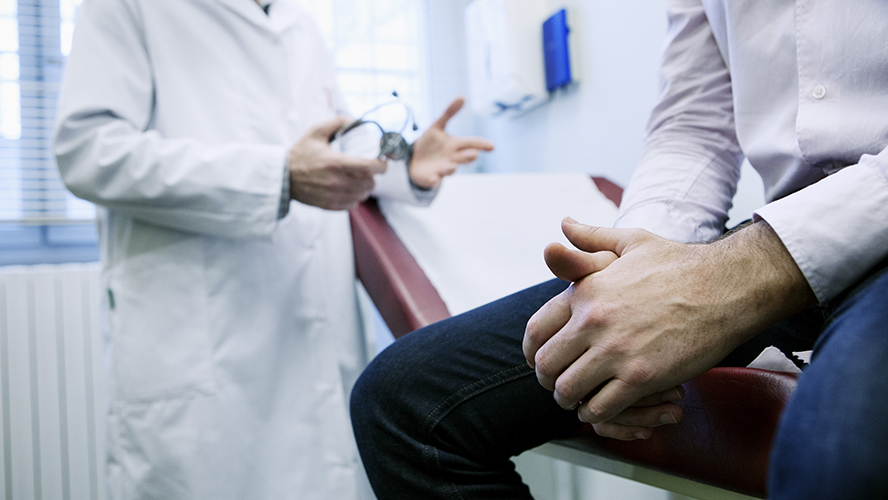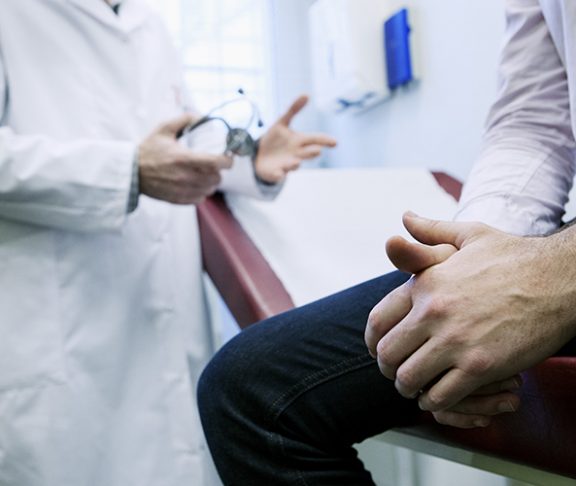Turning hope into action Dr. David Fajgenbaum is an immunologist and assistant professor at the Perelman School of Medicine of the University of Pennsylvania. In 2010, he became critically ill with idiopathic multicentric Castleman disease (iMCD). He wrote a book ‘Chasing My Cure: A Doctor’s Race to Turn Hope into Action’ giving in-depth insights into the patient experience for iMCD. His story is about the challenging route to diagnosis, the complexity of treatment, and how to turn hope into action to advance diagnostics and treatment options for other patients with iMCD.
Searching for the diagnosis with worsening symptoms
Fajgenbaum was a healthy third year medical student, when he noticed flu-like symptoms, abdominal pain, and fluid accumulation around the ankles. “I did not know what was wrong, but I knew it was something quite serious”, Fajgenbaum explains. “I was getting more fatigued than I had ever felt and over the course of just a couple weeks I went from these mild symptoms to really severe fatigue, lots of fluid around my ankles, and terrible knife-like abdominal pain.
Eventually, I went to the emergency department, where they ran a series of tests and immediately recognized that something was wrong, but they also did not know what it was. That is quite common for Castleman disease. The differential diagnosis is broad, ranging from lymphoma to an acute infection, like Epstein-Barr Virus (EBV), or maybe an atypical presentation of lupus.”
During this search for the diagnosis, Fajgenbaum’s symptoms increased rapidly and laboratory values had started to become very abnormal. “I was hospitalized, because my platelet counts, albumin levels, and hemoglobin levels were dropping significantly, and my CRP levels were rising. I had a retinal hemorrhage causing temporary loss of sight in my left eye. I was admitted to the intensive care unit, as I was getting more and more ill.
Fluid was accumulating all over my body due to dysfunction of my liver and kidneys, causing a gain of around 70 pounds of fluid everywhere.
This was all without a diagnosis. Finally, the doctors considered doing a lymph node biopsy. In hindsight, that would have been the right thing to do early on, but they were worried – since I was so critically ill – that I would not be able to survive general anesthesia. Weeks and weeks went by with no lymph node biopsy and no diagnosis. I was just kept alive through daily platelet transfusions, red blood cell transfusions, and medical care.”
After 11 weeks of hospitalization, a lymph node biopsy was finally done, which revealed that Fajgenbaum was suffering from a rare and deadly disease, called idiopathic multicentric Castleman disease, iMCD. “I had multiple regions of enlarged lymph nodes; that’s why it is called multicentric”, Fajgenbaum explains. “Furthermore, my lymph node was tested for the human herpes virus 8 (HHV-8). Since that virus was not found, the disease is labeled as idiopathic. This same exact clinical picture can also occur in the setting of an infection with HHV-8; this is HHV-8-associated MCD.”
Staying in remission
Fajgenbaum came to a conclusion after multiple different kind of treatments “I realized that I could no longer just live with the ups and downs of iMCD and that I would need a transition from being a patient to being a part of fighting back against the disease. I finished my third year of medical school and wanted to be a part of advancing research and treatment for this disease.”
In 2012, Fajgenbaum started a foundation together with hematologist/oncologist professor Frits van Rhee, called the Castleman Disease Collaborative Network (CDCN), and started conducting laboratory research into the disease. One year after starting CDCN, Fajgenbaum relapsed again and survived due to the same multi-agent chemotherapy. “This was an extra trigger for me to continue my search for a drug that could keep me in remission”, Fajgenbaum explains.
“After a series of experiments and studies, this led to identifying the mTOR inhibitor sirolimus. Now, there is a clinical trial open at the University of Pennsylvania for patients who have failed to respond to IL-6 blockade. International patients can also enroll in the study. Therefore, it is important to be hopeful, but you cannot stop at hoping. If I hope something, I look for what I can do to achieve this and I take action.”
That’s turning hope into action.
Fajgenbaum is currently still on sirolimus and is doing really well. He has now been in remission for over 6,5 years and was able to join the faculty at the University of Pennsylvania, where he’s currently running a center focused on Castleman disease and related cytokine disorders. There is an international natural history registry, called ACCELERATE, where patients can register themselves directly online. This provides an incredible resource for scientists and researchers that are working towards better understanding Castleman disease. Additionally, there is a biobank at the University of Pennsylvania, where blood samples from patients all over the world with iMCD are collected for research purposes.
Fajgenbaum’s key messages
Fajgenbaum’s story is not that different from other patient experiences with iMCD. The route to diagnosis is complex and there still are few treatment options. However, there have been important developments lately and the story provides some useful insights from a patient’s and a doctor’s perspective that can be used in daily practice for recognizing and treating iMCD.
Do not hesitate to reach out for help
If physicians have any challenges with a complicated case, which cannot be treated according to the treatment guidelines, they can reach out for help through the international discussion board on CDCN, called CDCN Connect. Physicians can also encourage their patients to enroll in the registry ACCELERATE and consider giving a blood sample to the biobank so additional research can be done.
References
- Fajgenbaum DC, Uldrick TS, Bagg A, et al. International, evidence-based consensus diagnostic criteria for HHV-8-negative/idiopathic multicentric Castleman disease. Blood 2017:129(12):1646-1657.
- Van Rhee F, Voorhees P, Dispenzieri A, et al. International, evidence-based consensus treatment guidelines for idiopathic multicentric Castleman disease. Blood 2018;132(20):2115-2124.



